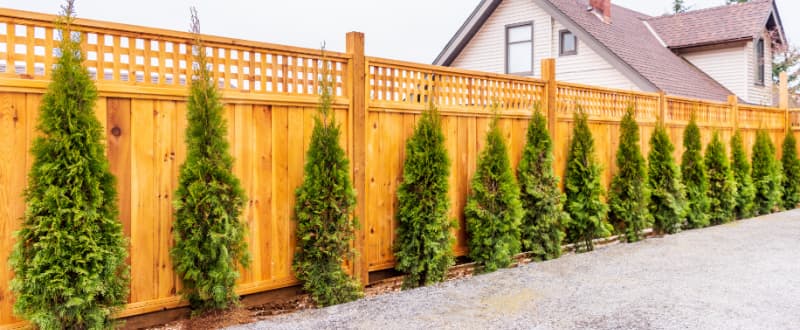Summer brings bright sunshine, longer days, and increased humidity—which means it’s the perfect time to give your fence some much-needed attention. Whether you have a wooden, vinyl, or aluminum fence, proper seasonal maintenance can extend its life and preserve its appearance. Here’s your guide to preparing and maintaining your fence through the heat and moisture of summer.
Why Summer Fence Maintenance Matters
Fences are exposed to the elements year-round, but summer’s intense sun and increased moisture can accelerate wear and tear. Without proper care, your fence may suffer from fading, cracking, mold, and warping. Summer is an ideal time to clean, inspect, and protect your fencing—especially if it’s made of wood. If you own a wooden or composite fence, this seasonal upkeep is even more critical.
Staining and Sealing Your Wooden Fence
Wood fences require special care during summer due to the effects of UV rays and fluctuating humidity. One of the most effective ways to protect them is by staining or sealing the surface to prevent fading, rot, and water damage. But how do you know when it’s the right time? The “sprinkle test” is a good indicator: if water absorbs into the wood instead of beading up, it’s time to apply a stain or sealant.
Sealing for Wooden Fences
Sealers create a waterproof barrier that helps your fence resist moisture, mold, and rot. They’re typically clear and applied with a paintbrush or foam brush. A high-quality sealer is essential if you want to shield your fence from sun and rain for years to come.
Staining for Wooden Fences
Stains enhance your fence’s color while also providing UV protection. Depending on the transparency you prefer, stains can either highlight the wood’s grain or give it a bold, uniform tone. Choosing the right stain color can also boost your property’s curb appeal.
Proper Application Techniques
If you’re handling the job yourself or hiring a professional from Globus Gates, here are the key steps for sealing or staining a wooden fence:
- Clean the surface thoroughly to remove dirt, mildew, and old sealant.
- Use a wood brightener to neutralize any harsh cleaners.
- Allow the fence to dry completely, especially near slats and the ground.
- Apply the product evenly using a roller or brush, making sure it penetrates the grain.
- Use two to three coats for maximum durability and protection.
Stain or Seal—Or Both?
Should you stain, seal, or do both? That depends on your goals. If your priority is preserving the wood’s integrity, sealing alone may be sufficient. If you want both protection and a rich finish, combine staining with sealing. This dual treatment enhances both strength and appearance—ideal for homeowners looking to boost property value and curb appeal.
Best Time to Stain or Seal Your Fence
Timing matters when applying treatments to your fence. Early spring and peak summer heat aren’t ideal due to excessive humidity and fast-drying conditions. Instead, aim for a time when:
- Temperatures range between 50°F and 90°F (10°C to 32°C)
- You have at least 48 hours of dry weather
- The fence is not exposed to direct sunlight during application
How Often Should You Reapply?
Even the best treatments wear off over time. As a general rule:
- Stain: Reapply every 4–5 years
- Sealant: Reapply every 2–3 years
Keep in mind that these timelines can vary depending on your local climate, the type of wood, and the quality of the product used.

Maintain Your Fence, Preserve Your Investment
With consistent summer maintenance, your fence can last 15–20 years or more. Whether you’re sealing, staining, or doing both, the investment in time and materials will save you repair costs in the long run. For best results, consult with a professional fencing contractor.
At Globus Gates, we offer expert guidance and professional gate and fence installation services in Los Angeles and surrounding areas. Contact us today to schedule a summer maintenance check or to explore our wide range of fence solutions.

